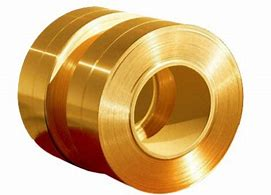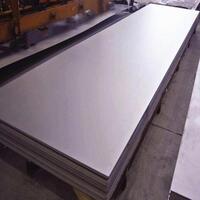1. Introduction
When you hear ‘metal clad,’ your brain probably conjures up images of a sleek corten steel facade or a shiny metal clad roof glistening in the sun. Maybe you’re even picturing that trendy steel clad house down the street with vertical standing seam metal siding that looks like it belongs in a sci-fi movie.

But here’s the plot twist: metal clad isn’t just about curb appeal. In fact, some of the most advanced applications of clad metals happen far from Instagrammable architecture—in places where failure isn’t an option, like nuclear reactors, jet engines, and offshore oil rigs.
So buckle up. We’re leaving the world of colorbond standing seam and pac clad coping behind and diving into the high-performance, high-temperature, high-pressure realm where metal clad saves lives—and billions of dollars.
2. What Exactly Is Metal Clad?
Before we blast off into niche applications, let’s clarify the metal clad meaning. Simply put, clad metals are composite materials made by bonding two or more different metals together. Think of it like a gourmet sandwich: one layer brings strength, another brings corrosion resistance, and the whole thing tastes better (or performs better) than any single ingredient alone.
The clad metal meaning hinges on synergy. For example, aluminum clad steel combines the lightweight nature of aluminum with the structural integrity of steel. Stainless clad aluminum? That’s stainless steel’s corrosion resistance wrapped around aluminum’s thermal conductivity.
Common types include copper-nickel clad, titanium clad, and even exotic combos like inconel 625 weld overlay on carbon steel plates. These aren’t your average hardware store finds—they’re precision-engineered for extreme environments.
3. Aerospace: Where Every Gram Counts (and Every Layer Matters)
3.1. Jet Engines That Won’t Melt
Modern jet engines run hotter than your ex’s temper. Temperatures exceed 1,000°C—way beyond what most metals can handle. Enter clad metals.
Turbine blades often use nickel-based superalloys with protective claddings like chromium electroplating or aluminide coatings. But for structural components, engineers turn to alloy-clad systems such as 2024-T3 clad aluminum or 7075-T6 clad sheets. These offer fatigue resistance without adding unnecessary weight.
- Aluminum clad stainless steel is used in fuel lines for its fire resistance and lightness.
- Titanium clad components shield sensitive avionics from electromagnetic interference while staying featherlight.

3.2. Spacecraft Heat Shields
Re-entering Earth’s atmosphere turns spacecraft into flying fondue pots. To survive, they need thermal protection that won’t crack, corrode, or add mass.
NASA and private space firms use multi-layer clad systems—sometimes stainless steel plate bonded to refractory metals like molybdenum or tantalum. The result? A heat shield that laughs at plasma temperatures.
4. Energy Sector: From Deep Sea to Nuclear Core
4.1. Offshore Oil & Gas: Corrosion’s Worst Nightmare
Saltwater doesn’t play nice. It eats steel for breakfast. That’s why subsea pipelines often use aluminum clad pipe insulation or copper-nickel clad tubing.
These clad metals resist biofouling, pitting, and galvanic corrosion—even at crushing depths. Bonus: they last decades longer than bare steel, saving millions in maintenance.
4.2. Nuclear Reactors: Safety Through Layering
In nuclear power plants, failure = catastrophe. So engineers use clad metals as a built-in safety net.
Fuel rods are encased in zirconium alloy cladding, but structural supports might use stainless clad aluminum or even inconel 600 plate for radiation resistance.
Boiler plate steel in high-pressure steam systems? Often upgraded with chrome carbide overlay or nickel sulfamate plating to prevent hydrogen embrittlement.

5. Architecture Meets Engineering: When Facades Do More Than Look Pretty
Okay, fine—we’ll give architecture a nod. But not just any metal clad wall.
High-performance buildings in corrosive coastal zones now use zinc clad dormers or corten steel siding not just for aesthetics, but because they self-protect via patina formation. Corten siding cost may be higher upfront, but lifecycle savings are massive.
And those pac clad column covers? They’re not just decorative—they often hide structural steel clad with aluminum for fire resistance and weatherproofing.
Even exterior corrugated metal siding gets a tech upgrade: some versions now integrate aluminum diamond tread plate for slip resistance on balconies or emergency walkways.
6. Why Pure Metals Just Can’t Cut It
Let’s be real: pure metals are like solo artists—talented, but limited. Clad metals are the full band.
Stainless steel plate? Tough, but heavy and expensive. Mild steel plate? Cheap, but rusts faster than a forgotten bike. Combine them via roll bonding or explosion cladding, and you get the best of both worlds.
Same goes for copper siding vs. aluminum clad wire: one conducts beautifully but oxidizes; the other stays stable and light. Together? Perfect for high-efficiency electrical grids.
Even mundane items like metal nameplates use brass plates for engraving over stainless backing—durability meets elegance.
7. Conclusion
Metal clad isn’t just a roofing trend or a fancy facade—it’s a materials science superhero quietly enabling humanity’s most ambitious projects. Whether it’s a titanium clad vessel holding molten salt in a next-gen solar plant or aluminum clad steel wire transmitting power across continents, clad metals are the unsung heroes of modern engineering.
So next time you admire a zinc facade or a steel clad building, remember: somewhere, deep inside a volcano-monitoring drone or a fusion reactor prototype, metal clad is doing the heavy lifting—layer by brilliant layer.
Our Website founded on October 17, 2012, is a high-tech enterprise committed to the research and development, production, processing, sales and technical services of ceramic relative materials such as Metal. Our products includes but not limited to Boron Carbide Ceramic Products, Boron Nitride Ceramic Products, Silicon Carbide Ceramic Products, Silicon Nitride Ceramic Products, Zirconium Dioxide Ceramic Products, etc. If you are interested, please feel free to contact us.
